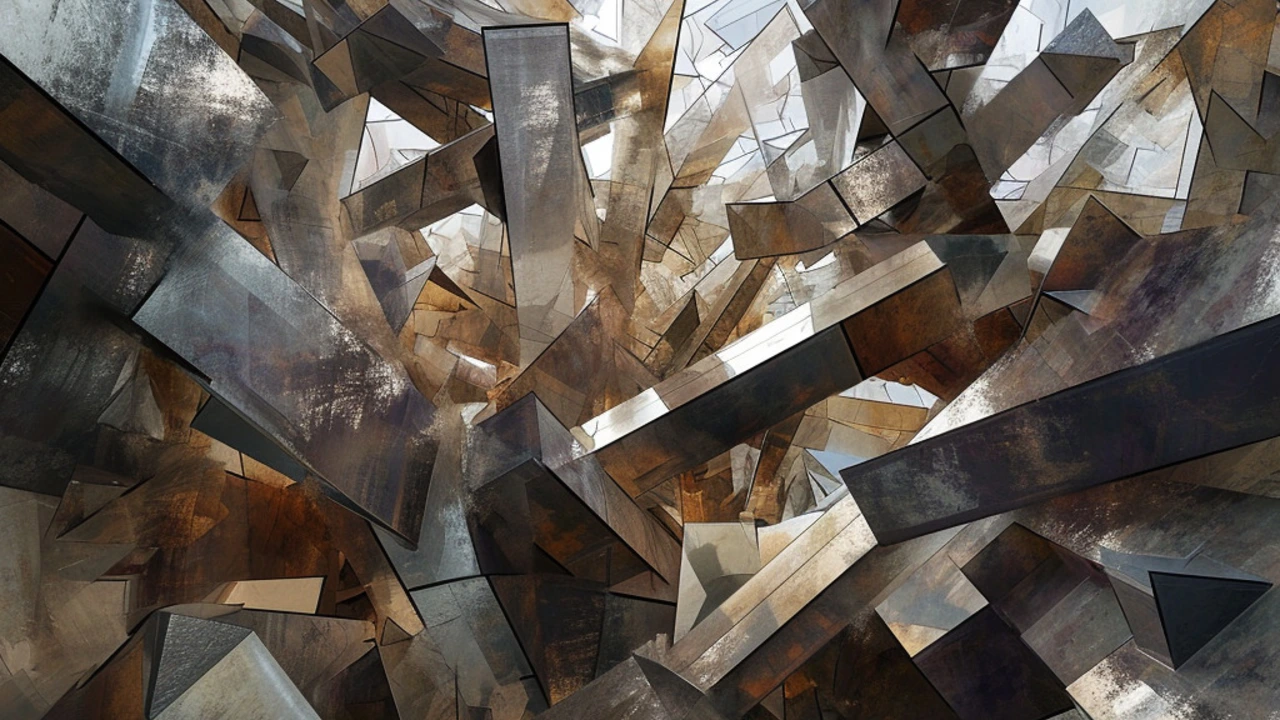Exploring Deconstructivism: Shifting Dynamics in Architectural Design
 Jan, 20 2024
Jan, 20 2024
Understanding Deconstructivism in Architecture
At its core, Deconstructivism in architecture is more than just an aesthetic; it's a philosophy that seeks to dismantle the very constructs of traditional architecture. Born out of philosophical ideas and the avant-garde movements of the 20th century, it represents a departure from rectilinear shapes and clean lines to embrace chaos and unpredictability. This movement disrupts the expected harmony and introduces an element of surprise into the built environment. Structures often feature non-linear shapes, seemingly unstable forms, and a juxtaposition of different materials and textures that all contribute to its signature look.
What's absolutely fascinating about Deconstructivism is that it's not about destruction. Instead, it's about deconstructing ideas of harmony, unity, and order to create something that speaks to the complexity and contradictions of modern life. It draws on the work of critical theorists like Jacques Derrida, whose thoughts on deconstruction influenced the language and approach of architects entering this realm. These architects, including the likes of Frank Gehry, Zaha Hadid, and Daniel Libeskind, carve their own paths in challenging the status quo through their designs.
The Roots and Evolution of the Movement
The term 'Deconstructivism' was first coined for the architectural realm during a 1988 exhibition titled "Deconstructivist Architecture" at the Museum of Modern Art in New York. The show featured the works of seven architects who were rejecting the functionalist and rationalist paradigms of modernism. Key influences stem from Russian Constructivism, with its abstract geometries and incorporation of social purpose, which Deconstructivism subverts in order to suggest a more complex relationship between function, form, and meaning.
The evolution of Deconstructivism can be traced through key projects that showcase its defining characteristics. Take, for example, the Vitra Fire Station by Zaha Hadid. Its planar geometries fracture the traditional fire station structure, offering a new visual representation of function and form. Likewise, the Jewish Museum Berlin by Daniel Libeskind is a silent but powerful rebellion against traditional museum layouts, with its zigzagging form generating a disorienting yet deeply memorable experience.
Notable Deconstructivist Works and Architects
If you're looking to immerse yourself in Deconstructivist architecture, then you must explore its most celebrated works. Frank Gehry's Guggenheim Museum Bilbao, with its fantastical curves and titanium-clad form, remains an emblematic example of the movement. Hadid's flowing, dynamic structures like the Guangzhou Opera House revolutionized the way we perceive concrete and steel. Rem Koolhaas's CCTV Headquarters in Beijing defies traditional skyscraper design with a looped shape that challenges perceptions of gravity and stability.
About the masters themselves, each has a distinct approach to Deconstructivist architecture. Gehry's exploration of form through his sculpture-like buildings often begins with a process of crumpling and manipulating paper models. Hadid, dubbed the 'Queen of the Curve,' used painting to conceptualize her bold designs. Libeskind's architectural narratives are informed by his interest in philosophy, music, and the human condition. They all, however, share a common drive to create evocative, nonconformist spaces.
Deconstructivism’s Impact on Perception and Space
Deconstructivist architecture bends our perception of what a structure should be. Instead of serving simple aesthetic or functional purposes, these spaces invite viewers to question the building's relationship with its surroundings, its user, and the larger context. The abstract forms and fragmented designs play with our notion of perspective and scale, often creating a dynamic interaction between the building and the viewer.
The spatial experience within Deconstructivist buildings can be equally disorienting and exhilarating. Walking through the alleys and expanses of the Royal Ontario Museum's extension or the twisted body of the Dancing House in Prague, one experiences shifting vantage points and layered spaces that wouldn't exist in traditional architecture. This unique engagement with space encourages viewers to become active participants in the architectural experience rather than passive observers.
Challenges and Controversies Surrounding Deconstructivism
No movement is without its critics, and Deconstructivism has faced its share of controversy. Its often impractical and extravagant features raise questions regarding sustainability, functionality, and cost. Critics argue that the focus on form often overshadows the utility of the structure and its environmental impact. The radical aesthetic also ignites debates over the relevance and longevity of these buildings, with some critics dismissing them as mere architectural novelties.
Despite the obstacles, these critiques form an essential dialogue surrounding the movement. They push architects and theorists to refine their approaches, ensuring that Deconstructivist architecture continues to evolve. They also encourage a deeper conversation about what we value in our built environment and how we envision the future of urban spaces.
The Future of Deconstructivism in Architecture
Looking ahead, the principles of Deconstructivism seem to be resonating with digital advancements in architecture. Computational design and new fabrication techniques are allowing for more complex, daring forms. As we embrace these technologies, the potential for sustainable materials and methods to intertwine with Deconstructivist principles could lead to an exciting new chapter for the movement.
More than just a trend, it seems Deconstructivism has sown seeds that will germinate as architects consider how our rapidly shifting global culture informs the structures we inhabit. Its future might not be purely deconstructivist in the traditional sense, but a hybrid where its principles inform elements of design that balance form, function, and sustainability in innovative ways.